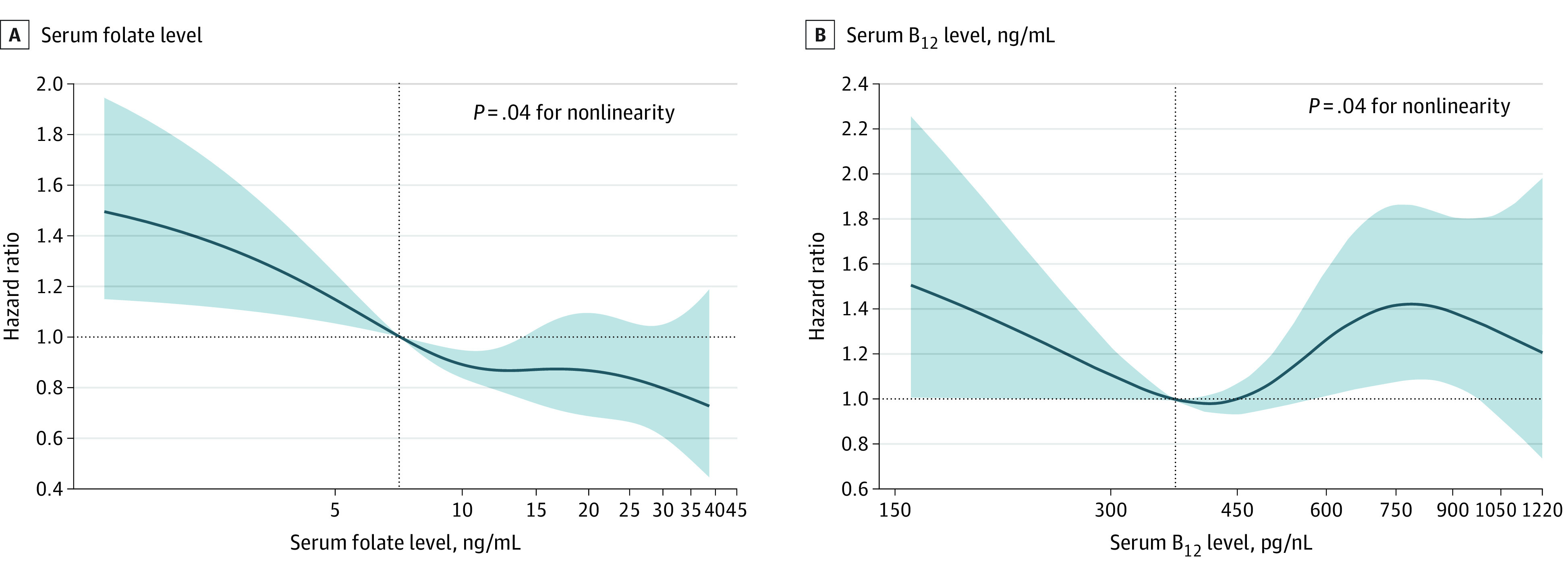Figure. Association of Serum Folate and Vitamin B12 Levels With Cardiovascular Disease Mortality Among Adults With Diabetes in the National Health and Nutrition Examination Survey III (NHANES; 1988-1994) and NHANES 1999 Through 2014.

Hazard ratios (solid lines) and 95% CIs (shaded areas) were adjusted for age (continuous), sex (male or female), race and ethnicity (self-reported Mexican American, non-Hispanic Black, non-Hispanic White, or other), body mass index (calculated as weight in kilograms divided by height in meters squared; <25.0, 25.0-29.9, or ≥30.0), educational level (<high school, high school or equivalent, or ≥college), family income level (lower, normal, or higher), smoking status (never, ever, or current), alcohol consumption (none, low to moderate, or heavy), physical activity (inactive or active), Healthy Eating Index (continuous), duration of diabetes (<3, 3-10, or >10 years), diabetes medication use (none, oral glucose-lowering medication, only insulin, or oral glucose-lowering medication and insulin), glycated hemoglobin A1c (<7% or ≥7%), self-reported hypertension (yes or no), and self-reported hypercholesterolemia (yes or no). Vertical dotted lines indicate the 25th percentile. To convert serum levels of vitamin B12 to picomoles per liter, multiply by 0.7378; folate to nanomoles per liter, multiply by 2.266.
